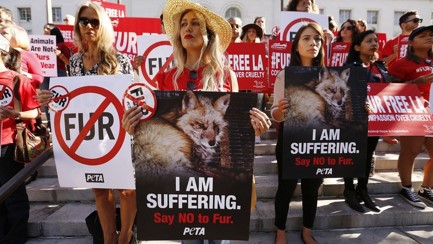Fur Trade: Is it right or wrong?
May 29, 2019
Fur coats have been around for a long time. Years ago, if someone had a fur coat they were perceived as wealthy. Kings and Queens commonly wore fur from bears and wild exotic animals. But now times have changed. Fur coats are seen few and far between. Many people have protested against the use of fur in clothing because it’s cruel and unnecessary. Laws have been made prohibiting many types of fur to be traded. For example in India, it is illegal to sell tiger fur. Sadly, in China, there are very few laws restricting the trapping and killing of animals for fur.
In recent years countries have implemented laws to get rid of the fur trade market. For example in the United Kingdom there used to be eleven fur farms that produced up to 100,000 mink skins every single year. But, the Fur Farming Act made in 2000 by the U.K Parliament “ prohibits the keeping of animals solely or primarily for slaughter for the value of their fur.” All of the farms have since been shut down.
In Northern America it is legal to hunt for beavers, but only if you have a special license permitted by the government. Also, every pelt that the hunter gets must be tagged so that biologists can monitor the population of beaver in that specific area. If the population gets too low then they do not permit the hunting.
When students at CdMHS were asked if they would wear pelts and furs the answer was always no. Jacob Roytman, a ninth grader, says “I don’t see the point in wearing fur when you could easily just buy and wear a normal jacket or hoodie.” Another quote by Ryan Saywitz says “Its always so hot in Southern California, there is no point in wearing fur.”
In 2018 there were many protests held across California. Crowds gathered in front of stores such as Macy’s and on popular affluent roads such as Rodeo Drive in Beverly Hills. Los Angeles has taken another step towards banning the sale of fur because of the outrage and protests.












